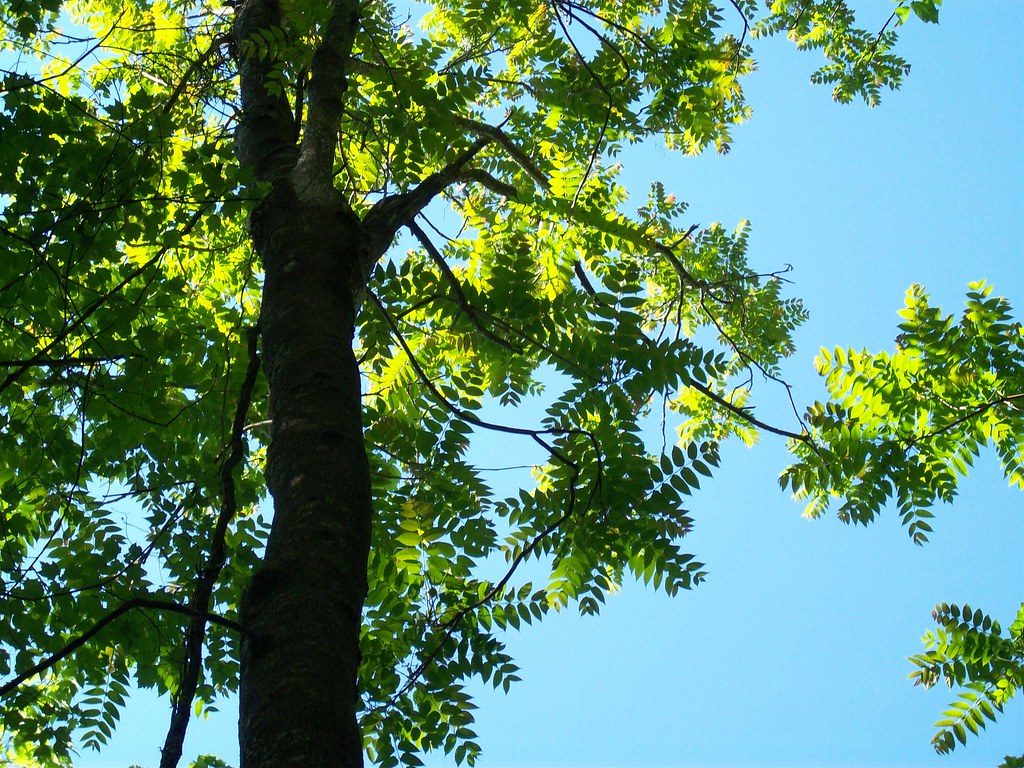This week we have a guest blog from Dr. Rico Gazal. Dr. Gazal is a plant / tree physiologist and an associate professor of Forestry in the Department of Land Resources at Glenville State College where he teaches courses in Forestry and Geographic Information System. Through his involvement in Geoscience Education in West Virginia, he designed an online learning module on Climate Change and Leaf Phenology. He has also been involved in training WV teachers, students and local volunteers on phenology and is implementing long-term observations of budburst and leaf fall of Liriodendron tulipifera in West Virginia since 2006. He was also involved in an NSF funded research on the effect of urbanization on leaf phenology. He has travelled to cities in Asia, Europe, North America and Africa to train teachers and students in the process of connecting the study of phenology to their local education curriculum.
Establishment and proliferation of invasive species in an environment where they were introduced is becoming a worldwide problem. During my trip to Kyushu University in Fukuoka, Japan in 2008 for a research fellowship, I was able to observe the same plant species that is also considered invasive in the United States. It is called the tree-of-heaven (Ailanthus altissima). This trip initiated a project involving a more in-depth investigation of the competitiveness of Ailanthus as an invasive plant. With the involvement of undergraduate students in the Department of Land Resources at Glenville State College in Glenville, West Virginia, USA and Kyushu University in Fukuoka, Japan, we started a research project to understand the physiological and morphological characteristics of Ailanthus in West Virginia, USA and Fukuoka, Japan. This species is common to both countries and is considered a threat to the native forest ecosystems. As part of our study, we also investigated the history of species introduction, differences in habitats and ecology of tree-of-heaven in these countries.

Mature tree of Ailanthus altissima.
To understand the competiveness of tree-of-heaven, it is important to become familiar with its characteristics that enable them to successfully invade a certain habitat. Without proper knowledge of the species competitiveness, it will be difficult to control its spread and determine its impacts on the ecology and functions of forest ecosystem. Mature Ailanthus trees may reach 25-30 m in height. The large compound leaves (0.3-1.2 m in length consisting of 11-25 leaflets) give them the competitive advantage by blocking much of the sunlight that would reach the forest floor inhibiting growth of shade intolerant plants. The trees produce significantly large amount of seeds in late summer to early fall that readily germinate in any soil conditions. Tree-of-heaven can also reproduce asexually through root sprouts. The wood is soft, weak, and coarsely grained. All parts of the tree emit a very strong odor that may be related to allelopathic chemicals that inhibit the growth of other plants around the trees. The tree-of-heaven also grows very quickly (1-2 m yr-1) that allows it to out-compete other species and form easily as a pure stand or monoculture. Ailanthus is a shade intolerant tree that grows in highly disturbed areas or open areas where there is plenty of light, moisture and nutrients. However, patches of tree-of-heaven have also been found in established forests that indicate their ability to adjust in any light conditions.

- A pure stand of tree-of-heaven in a natural forest in West Virginia.
Next week, we’ll discuss the origin and history of Ailanthus in both the United States and Japan and initial research.
Are you a GLOBE school examining invasive versus native species? We would love to hear about your research. Please leave us a comment or email us at science@globe.gov.

Hello,
I teach in Paw Paw Schools in Morgan county. Would you be interested in visiting our school or vis Skype or FaceTime to discuss this issue with my AP environmental students?
Thank you so much.
Carol Coryea
ccoryea@access.k12.wv.us